DETERMINE IF THE TABLE REPRESENTS LINEAR OR EXPONENTIAL FUNCTION
Subscribe to our ▶️ YouTube channel 🔴 for the latest videos, updates, and tips.
Linear function :
If the growth or decay involves increasing or decreasing by a fixed number(constant difference), then it should be a linear function.
y = mx + b
b is y-intercept and m is slope.
Exponential function :
If the growth or decay involves using multiplication, then it should be a exponential function.
y = a(b)x
a is starting value
b is multiplication factor, either growth or decay.
If b > 0 for growth and 0 < b < 1 when it is decay.
Decide whether the table represents a linear or exponential function. Then, write the function formula.
Problem 1 :
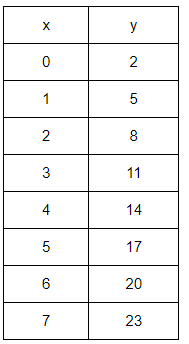
Solution :
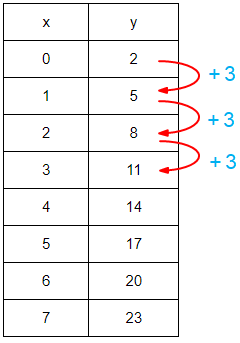
To get values of y, we have to add 3. Then, it is linear function.
Linear function will be in the form of y = mx + b
Slope(m) = 3 and y-intercept (b) = 2
So, the required function is y = 3x + 2
Problem 2 :
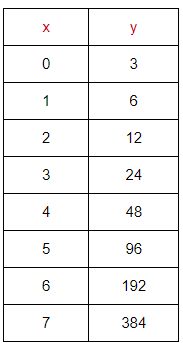
Solution :
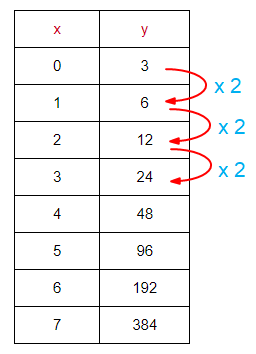
Since the multiplication factor is the same and it is greater than 1, it is exponential growth function.
Exponential function will be in the form of y = a(b)x
Initial value (a) = 3
Multiplication factor (b) = 2
So, the required exponential function is y = 3(2)x
Problem 3 :
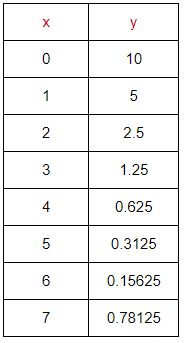
Solution :
Observing the values of y,
10/2 ==> 5
5/2 ==> 2.5
Since the multiplication factor is 1/2, that is lesser than 1. It should be exponential decay function
Exponential function will be in the form of y = a(b)x
Initial value (a) = 10
Multiplication factor (b) = 1/2
So, the required exponential function is y = 10(1/2)x
Identify the function as linear or exponential and determine the slope or growth factor. Write the rule for each function and sketch a graph labeling the y-intercept.
Problem 4 :

Solution :
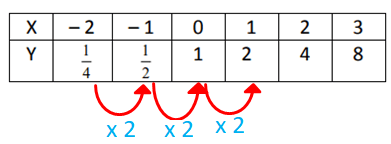
Since the multiplication factor is same and it is greater than 2. It is exponential growth function.
Multiplication factor = 2
Exponential function will be in the form of y = a(b)x
Initial value (a) = 1
So, the required exponential function is y = 1(2)x
Problem 5 :

Solution :
By observing the values of y, it is added by 2.
-4 + 2 ==> -2
-2 + 2 ==> 0
0 + 2 ==> 2
y = -4x + 2
It is a linear function .
Problem 6 :

Solution :
By observing the values of y, it is multiplied by 2
(1/16) x 2 ==> 1/8
(1/8) x 2 ==> 1/4
(1/4) x 2 ==> 1/2
(1/2) x 2 ==> 1
Multiplication factor = 2
a = 1/4 and b = 2
y = (1/4)(2)x
It is a exponential function.
Problem 7 :

Solution :
By observing the values of y, it is added by 2
-2 + 2 ==> 0
0 + 2 ==> 2
2 + 2 ==> 4
y-intercept = 2
y = 2 + 2x
It is a linear function.
Subscribe to our ▶️ YouTube channel 🔴 for the latest videos, updates, and tips.
Recent Articles
-
Finding Range of Values Inequality Problems
May 21, 24 08:51 PM
Finding Range of Values Inequality Problems -
Solving Two Step Inequality Word Problems
May 21, 24 08:51 AM
Solving Two Step Inequality Word Problems -
Exponential Function Context and Data Modeling
May 20, 24 10:45 PM
Exponential Function Context and Data Modeling